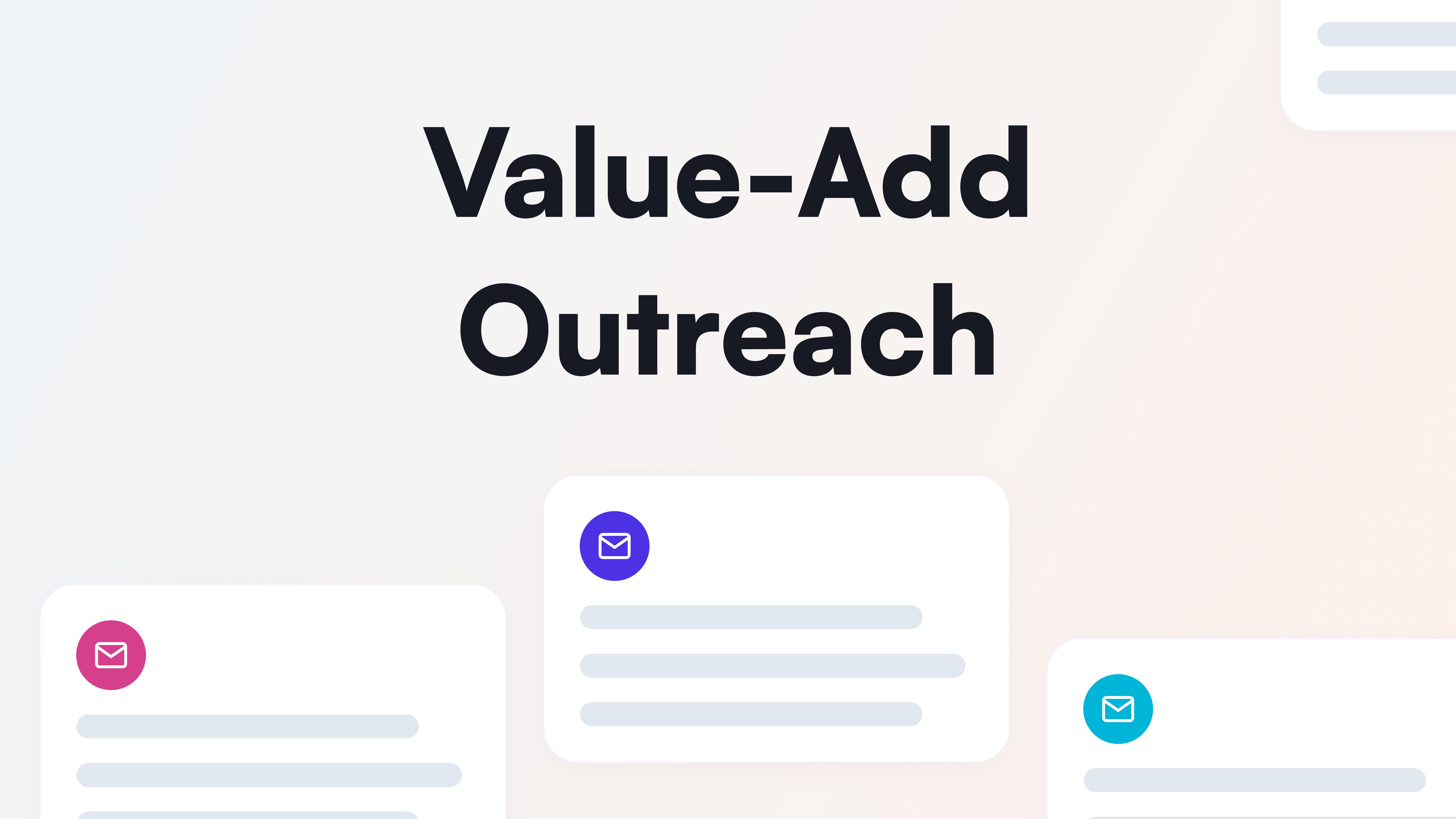As we touched on in our lesson on the warm outbound mindset, value-add outreach is all about shifting our mindset to think more from an advocate/success lens.
Value-add outreach is about delivering value to your prospects as they evaluate your product. If we go back to our lesson on account research, it’s about understanding the specific set of actions prospects are taking on our website, docs, and products and using those data points to drive the conversation. Check out our lesson on thinking like an advocate here.
- Speed to Lead Act quickly when you notice intent. Even a simple message is better than waiting for the perfect one, as the prospect’s interest may fade. Immediate engagement shows attentiveness and can significantly increase your chances of a successful connection.
- Guide Them When a prospect visits your site or product, consider the next valuable resource to share based on their interests. If they’re looking at an enterprise solutions page, share a guide on large team expansion. Make yourself available via email to answer questions or share best practices.
- Understand What Your Prospect Cares About Use Koala’s account and visitor data to quickly understand each person’s motivations, engagement level, and specific interests. This allows you to tailor your outreach to address their unique needs and challenges.
- Be Genuinely Helpful After understanding their interests, figure out how you can genuinely help them. Identify where they might be stuck and offer assistance. Simple, genuinely helpful messages perform better than long sequences. Your goal is to build trust and show that you are there to support them.
- Engage Naturally Choose the most natural way to engage from the prospect’s point of view. Use email to ensure your message hits their inbox, try LinkedIn for a more informal chat, or consider using Slack Connect for real-time engagement with top accounts. The channel should match the prospect’s communication preferences.
- Introduction Message: “I’m your account manager – I just wanted to create a direct line for questions if you had anything I could answer over email.”
- Personalized Recommendation: “Given that you were looking at X, I thought Y might be interesting to you as I just helped another client solve this.”
- Offering Best Practices: “Would it be helpful to hear best practices around X? Just helped [social proof customers] with this recently.”
- Multithreading: If you see multiple visitors from the same account, it’s a great opportunity to bring them together for a collective demo or to answer their questions. This can help create a more cohesive and comprehensive understanding of your solution across the account.
- “I saw that X, Y, Z were all poking around. Would it be helpful to get the team together for a top-to-bottom demo?”
- Known Users: Be more direct. For example, “I noticed you were checking out our enterprise solutions pages. I’m curious to understand your use case.”
- Anonymous Users: Use slightly less definitive language. Instead of “I saw you on the site,” say “I saw someone from X on the site” or even avoid referencing the site activity directly.
Quick note on subject lines: Try to use short, casual subject lines (2-3 words) instead of overly salesy ones to improve open rates.
Steal all of our email templates here. based on key signals including pricing page, comparison page, tech docs visits, and more.
Remember, engaging with your prospects is going to look different depending on your company and your sales motion, but by taking the mindset of being genuinely helpful, you can improve your chance of connecting with top accounts.
If you’re looking for more inspiration, check out our Path to Pipeline series to learn the creative strategies that top sellers are using to get in touch with their accounts.
🔁 How Enrichment Works
🧠 Warm Outbound Mindset
🔍 Advanced Account Research
🚨 Signal Best Practices
📧 Value-Add Outreach



